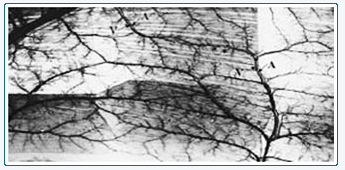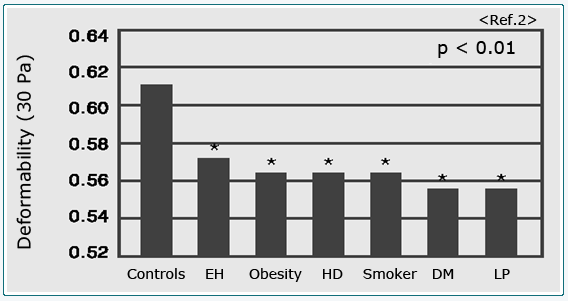
Quick and Easy Test for
Blood Rheology

Innovative Technology for Hemorheology

Model: RheoSCAN-D500
RheoSCAN-AnD300 can measure comprehensive rheological properties of blood within a short time (< 2 min). Now, RBC deformability, aggregation and aggregating force can be easily measured with a leading-edge microfluidic technology.
• Deformability : EI@3Pa, EImax, t1/2
• Aggregation : AI, M, ESR, t1/2
• Aggregating force : critical shear stress (CSS)
• Due to the quick and easy operation, RheoSCAN can be used at research laboratories and clinical environments.
RBC Deformability
- Sample volume :5㎕
- Testing Time : 30 s
- Microfluidic
- Laser Diffraction

RBC Aggregation
- Sample volume : 8㎕
- Testing time : 120 s
- Microfluidic Stirring
- Light Transmission

Critical Shear Stress
- Sample volume : 500㎕ (=0.5mL)
- Testing Time : 30 s
- Microfluidic shearing
- Light Backscattering


Introducing RheoSCAN

FAST
-
Rapid test: the test takes less than a minute (30~60 seconds)

WHOLE BLOOD
-
Small volume of whole blood needed
-
Deformability(EI): 6uL + PVP Sol.
-
Critical Shear Stress(CSS): 500uL

SIMPLE & EASY
-
One step of pipetting
-
Disposable microchip
-
Automated operation

INNOVATIVE
The core technology includes:
-
Laser-diffraction
-
Microfluidic Rheometry
-
Image analysis
-
Precision fabrication

TARGETED
Patients with:
-
Diabetes Mellitus
-
Diabetic Complications
-
Diabetic Retinopathy (eye)
-
Diabetic Nephropathy (kidney)
-
Metabolic Syndrome
-
Anyone who want's to check their health status

EARLY DETECTION
-
RheoScan system shows significantly high correlation with DKD, DR, and MetS through CSS
Diabetic Complication Screening Assay - RheoSCAN-D300
RBC Deformability



Laser-Diffraction

*RheoScan AnD-300


*RheoScan D-300

Cytometry Part B (2006)


Biosensor &Bioelectronics (2003)

(X=L, Y=W)

Cytometry Part B (2006)

Impaired RBC Deformability leads to hypoxia
RBC deformability plays a critical role in blood circulation. Healthy RBCs have to pass through capillaries whose diameter is smaller than their size. Decreased red blood cell deformability results in hypoxia due to decreased oxygen delivery capacity in blood vessels.
→ Serious problem in micro-circulation

Hyper-aggregated RBCs result in vascular diseases
RBC aggregation is one of the key factors in determining blood flow resistance in microcirculation. Healthy red blood cells are easy to disaggregate and enter small vessels in an efficient manner, whereas hyper-aggregated red blood cells do not dis-aggregate and causes local hypertension, vascular sclerosis, and hypoxia.
Innovative Microfluidic Diffractometer Standard comparison

Deformability comparison between healthy control and diabetes group.

Critical Shear Stress (Aggregation – Ⅰ) comparison between healthy control and diabetic / Hyper aggregation group.
Associated Pathologies: Microcirculatory Disease

-
Diabetes Mellitus
-
Diabetic Complications
-
Diabetic Retinopathy
-
Diabetic Nephropathy
-
Hypertension
-
Hemodialysis
-
Lipoidproteinosis

-
DM: Diabetes Mellitus
-
DMR: Diabetic Retinopathy
-
CRF: Chronic Renal Failure
-
ESRD: End Stage Renal Disease

-
EH: Essencial Hypertension
-
HD: Hemodialysis
-
LP: Lipoidproteinosis
-
DM: Diabets Mellitus
Critical Shear Stress


Critical Shear Stress(CSS) is the minimum force required to disperse RBC aggregation. CSS is found to be independent of hematocrit.
The diagnosis takes less than 1 minute.
CSS only requires 500uL of whole blood sample. RBC deformability requires 6uL of whole blood sample with PVP solution.

RBC aggregation is dispersed somewhere


Backscattering w/ pressure-scanning


Clin. Hemorheol. Microcirc. (2009)





